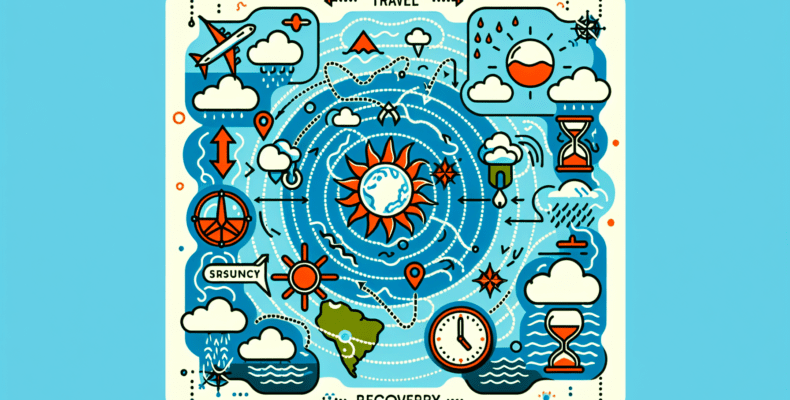Travel Recovery in the Pacific: Worrying Signs
So, let’s chat about this whole “travel recovery” saga that seems to be unfolding in the Pacific. You might be thinking, “Isn’t that all behind us now?” Well, sit tight because the reality is a bit murkier than you’d hoped.
The Return of Tourism: A Double-Edged Sword
Sure, tourism is creeping back, but let’s not pop the champagne just yet. The Pacific region, once a thriving hub of travelers, is facing some unsettling challenges. While the flights are resuming and more travelers are hitting those beautiful beaches, the underlying issues are festering like a bad sunburn.
- Overreliance on Tourism: Many Pacific nations are still heavily reliant on tourism as their economic backbone, which has proven to be quite fragile. When the pandemic hit, the first thing to go was travel, leading to severe economic downturns.
- Environmental Concerns: More tourists mean more environmental stress. It’s not just about how many feet are on the sand, but also how many plastic bottles end up in the ocean.
- Cultural Erosion: With the influx of visitors, local cultures are at risk. The more tourism grows, the more authentic experiences might face dilution. It’s a slippery slope.
A Rollercoaster of Challenges
As we dive deeper, it’s crucial to look at the broader impacts on local communities. This recovery isn’t coming in like a gentle tide. No, it’s more of a storm surge.
- Health Infrastructure: Many islands are still reeling from inadequate health services due to previous spending cuts. This isn’t a minor hiccup; it’s a systemic issue that needs urgent attention.
- Labor Shortages: There’s an unprecedented scramble for workers. The hospitality sector is particularly hard hit. Workers have moved on to other jobs, leaving restaurants and hotels scrambling to fill positions.
- Price Hikes: With fewer workers and increased demand, the cost of living is on the rise. Locals are caught between wanting to welcome tourists and the reality of an increasing daily grind.
The Shift in Traveler Preferences
Let’s talk about how travelers’ habits have changed over the last few years. After hibernating for so long, people are now looking for different experiences. The idyllic vacation spot is still desirable, but now visitors are weighing their options carefully.
- Diversity is Key: Tourists are seeking places with diverse offerings, moving away from the standard beach-and-relax mindset.
- Authentic Experiences: It’s not just about sitting by the pool anymore; people want to connect, learn, and immerse themselves in local cultures.
- Sustainability: More travelers are prioritizing eco-friendly options.
So, What’s Next?
This brings us to a pressing question: what’s next for travel in the Pacific? The answer is not entirely optimistic, nor is it entirely bleak. It’s more complex, like a tangled fishing net.
- Investment in Sustainability: If nations want to maintain their allure, they must invest in sustainable tourism practices. It’s a must-have, not just a nice-to-have.
- Community Engagement: There’s a pressing need to engage local communities in tourism development. When locals thrive, everyone thrives.
- Health Protocols: Maintaining robust health measures will be essential. Travelers are looking for safety; they won’t book a trip to a destination that feels risky.
Wrapping it Up
In conclusion, the travel recovery in the Pacific is a mixed bag. It offers glimpses of hope wrapped in a cloak of challenges. The region needs to navigate these waters wisely to ensure that those beautiful islands don’t just become playgrounds for the few. Balancing tourism with authenticity, sustainability, and community well-being will be paramount in shaping a future where both locals and travelers can thrive. So, keep an eye on this evolving narrative, because it’s going to be anything but boring.
